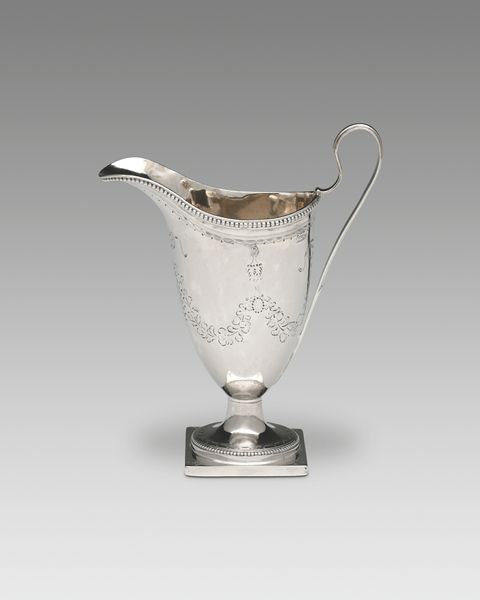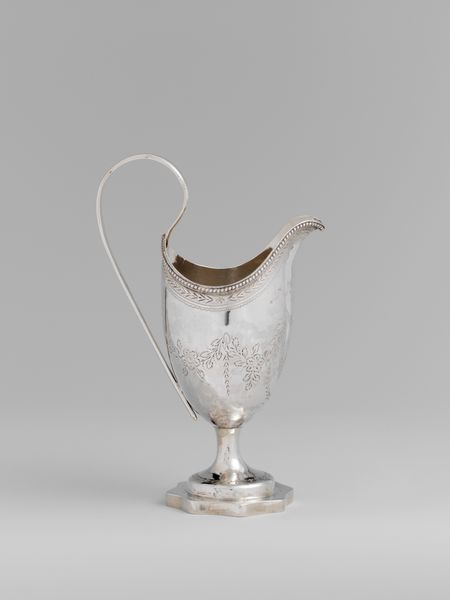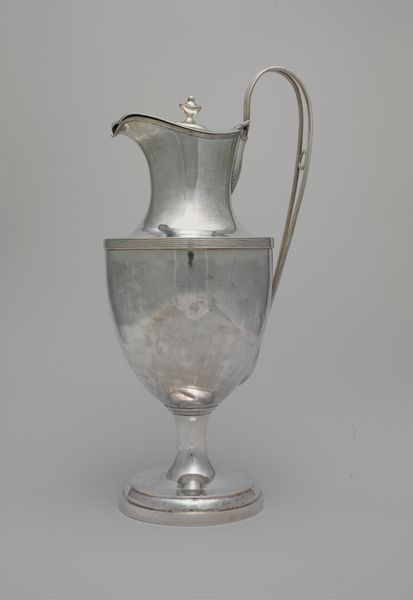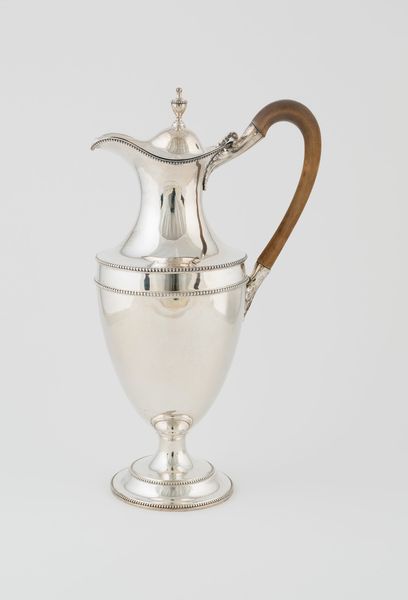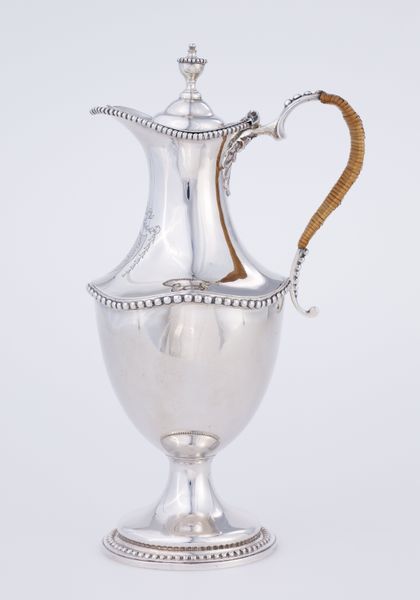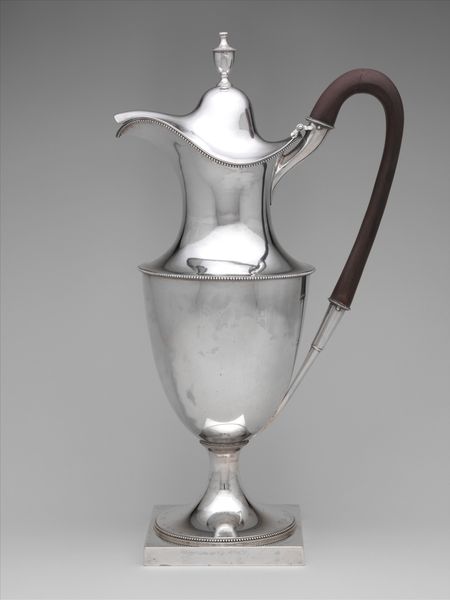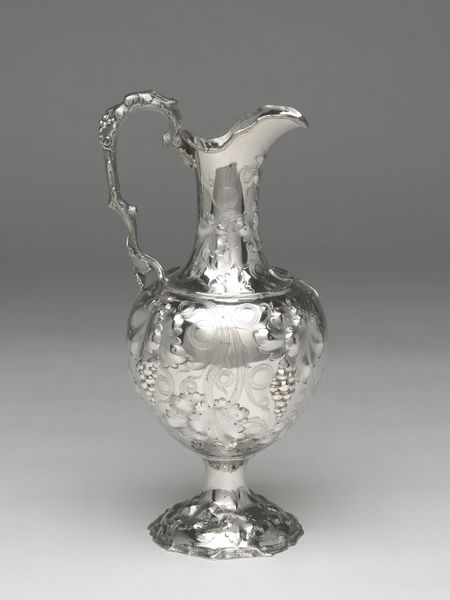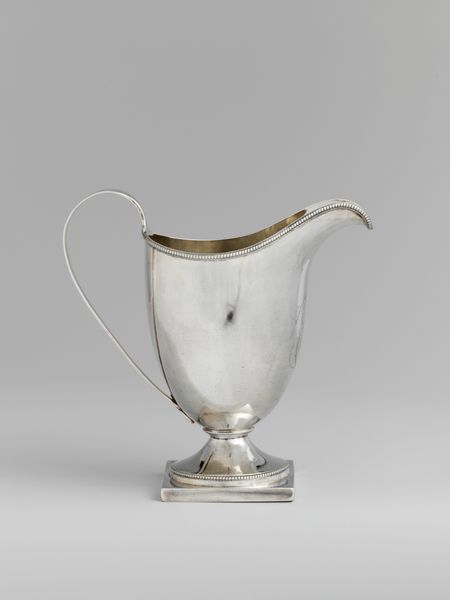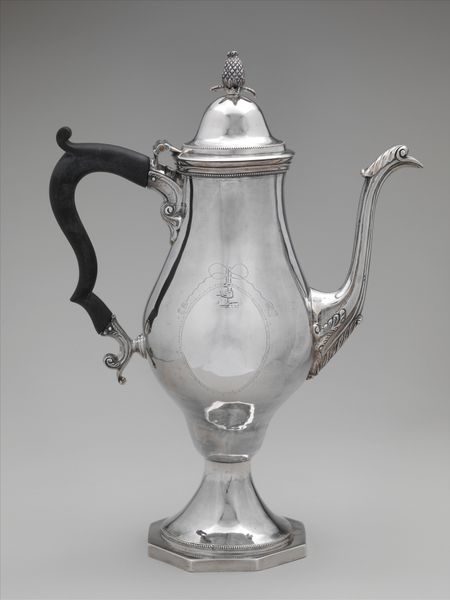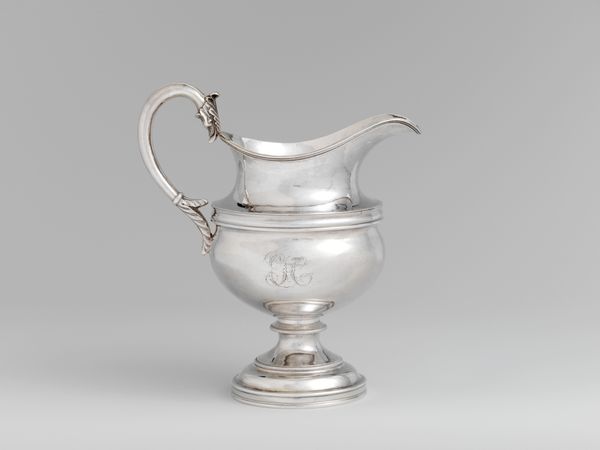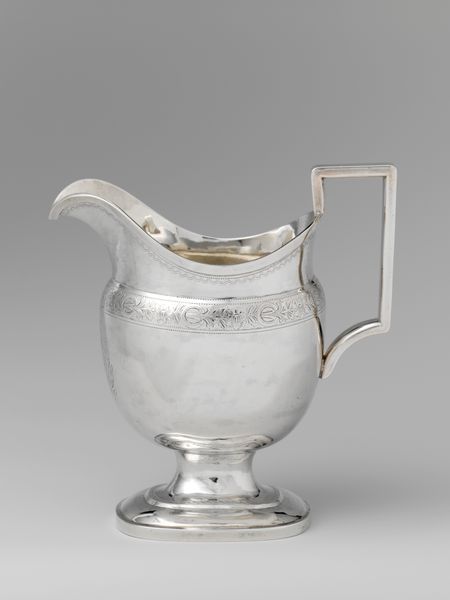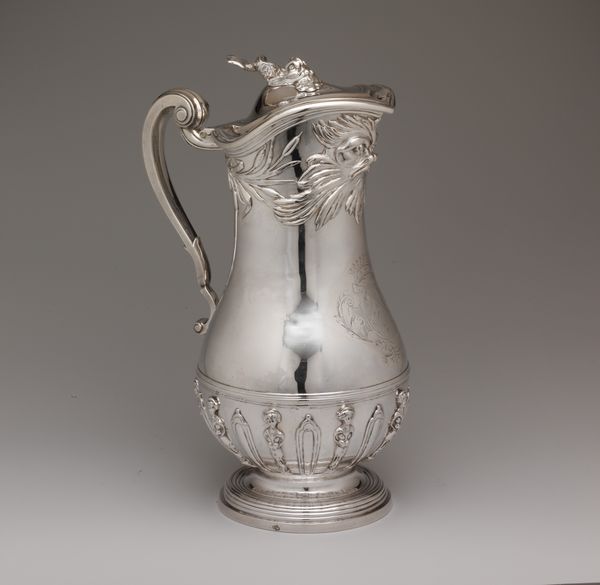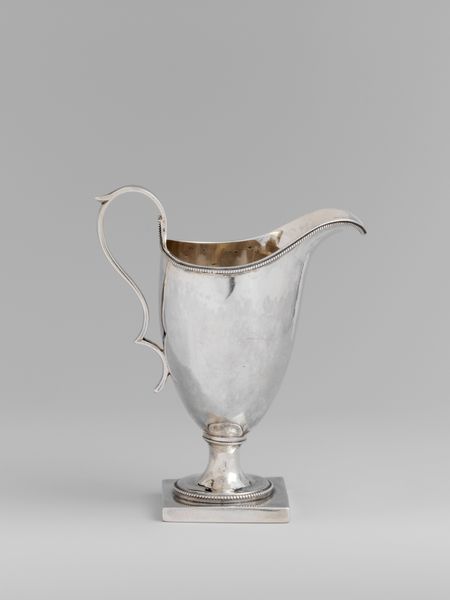
silver, metal, metalwork-silver, sculpture
#
neoclacissism
#
silver
#
metal
#
metalwork-silver
#
sculpture
#
decorative-art
Dimensions: Overall: 15 1/4 × 7 × 5 3/8 in. (38.7 × 17.8 × 13.7 cm)
Copyright: Public Domain
This elegant ewer was crafted in France by Pierre Joseph Jacques Tiberghien, likely around the late 18th century. Its form and the precious material it's made from speaks volumes about the rituals of elite society. During this period, objects like this weren’t just functional, they were powerful markers of status and taste, reflecting one's place in the social hierarchy. Silver, of course, was an expensive material, putting such items out of reach for the vast majority. The ewer's design also draws on classical forms, a conscious nod to the art and culture of ancient Greece and Rome. This was a common trend among the upper classes, keen to associate themselves with the perceived refinement of classical civilization. Historical records, such as inventories of aristocratic households or guild records of silversmiths, can shed light on the production and consumption of such luxury goods. This helps us understand the social dynamics reflected in something as seemingly simple as a water jug. The ewer isn't just an object, it’s a window into a world of privilege and power.
Comments
No comments
Be the first to comment and join the conversation on the ultimate creative platform.
